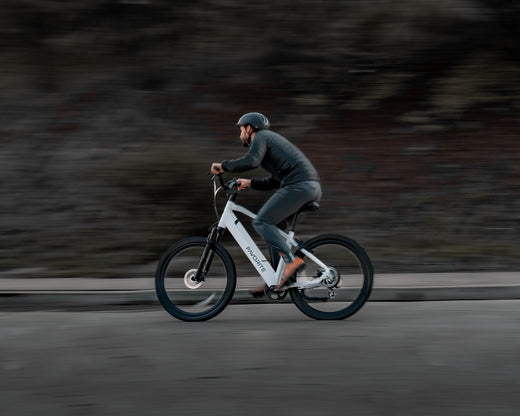
What Factors Influence the Typical Speed of an Electric Bike During Commuting?
Electric bikes are becoming a preferred choice for commuting, offering a fast, eco-friendly alternative to traditional vehicles. But when it comes to speed, e-bikes have a range of influencing factors. From motor power to terrain type, multiple elements determine how fast a commuter e-bike can travel. Here’s an in-depth look at what impacts the average speed of a commuter e-bike.
1. Motor Power and Design
The motor is one of the most significant factors affecting an e-bike’s speed. Generally, a higher wattage motor provides more power and faster speeds. Most commuter e-bikes are equipped with motors between 250 to 750 watts. While 250 watts can handle daily commuting at moderate speeds, higher wattage (such as 500 watts or more) will allow for better acceleration and faster speeds, especially on hills. Riders aiming for quicker commutes should consider an e-bike with a powerful, high-quality motor.
2. Battery Capacity and Weight
Battery capacity plays a crucial role in sustaining power and maintaining speed over longer distances. E-bikes with larger battery capacities can hold more charge, allowing them to deliver consistent power over extended periods without frequent recharging.
However, rider weight and any additional cargo impact speed as well. Heavier riders or bikes loaded with cargo require more power to reach and maintain high speeds. Riders who plan to carry packages or heavy loads may want to look into e-bikes designed for cargo, as they typically have features geared towards supporting extra weight while maintaining efficient speed.
3. Terrain Type
The terrain you ride on directly impacts how fast your e-bike can go. Smooth, paved roads allow e-bikes to reach their maximum speeds easily, but rough or uneven surfaces create additional resistance, slowing you down. Gravel, dirt paths, or steep inclines all require more power from the motor and reduce the bike’s ability to reach top speeds.
4. Tires
Tire size, width, and air pressure all play a role in speed. Wider or larger tires provide better traction but can slow down the ride due to added drag. Some riders prefer lower tire pressure for a softer ride on rough terrain, but this can further reduce speed. Commuters looking for efficient speeds on flat, paved roads should opt for narrower, high-pressure tires, which reduce friction and increase speed.
5. Weather Conditions
Weather significantly impacts e-bike performance. Cold weather, for example, causes battery performance to drop, reducing range and speed. Rain or snow can create slippery surfaces, forcing riders to slow down for safety. Additionally, wind resistance can make it challenging to maintain high speeds, especially when riding against strong headwinds.
6. Safety Considerations
While your e-bike may have a top speed of up to 28 mph (depending on the class), it’s essential to prioritize safety over speed. Urban settings with traffic or crowded bike paths may require slower speeds. Ensure you’re equipped with a well-fitting helmet and any additional safety gear if you’re aiming to reach higher speeds, and always ride according to road conditions and local regulations.
7. E-Bike Class and Regulations
The speed limit of an e-bike can also depend on its class. In many regions, Class 1 and Class 2 e-bikes are limited to 20 mph, while Class 3 e-bikes can go up to 28 mph with pedal assistance. Local regulations may also dictate speed limits in certain areas, so it’s important to know the rules for your e-bike class.
Choosing an E-Bike for Commuting
With optimal conditions, many e-bikes can reach speeds of up to 28 mph. However, factors such as motor power, battery capacity, terrain, and weather can all impact how close you’ll get to that maximum. When selecting an e-bike, consider the type of commute you’ll have and choose a model with the right features for consistent, safe speed and performance.
By understanding these factors, you can better assess which commuter e-bike meets your needs and prepare for a smoother, faster ride.
No comments










0 comments